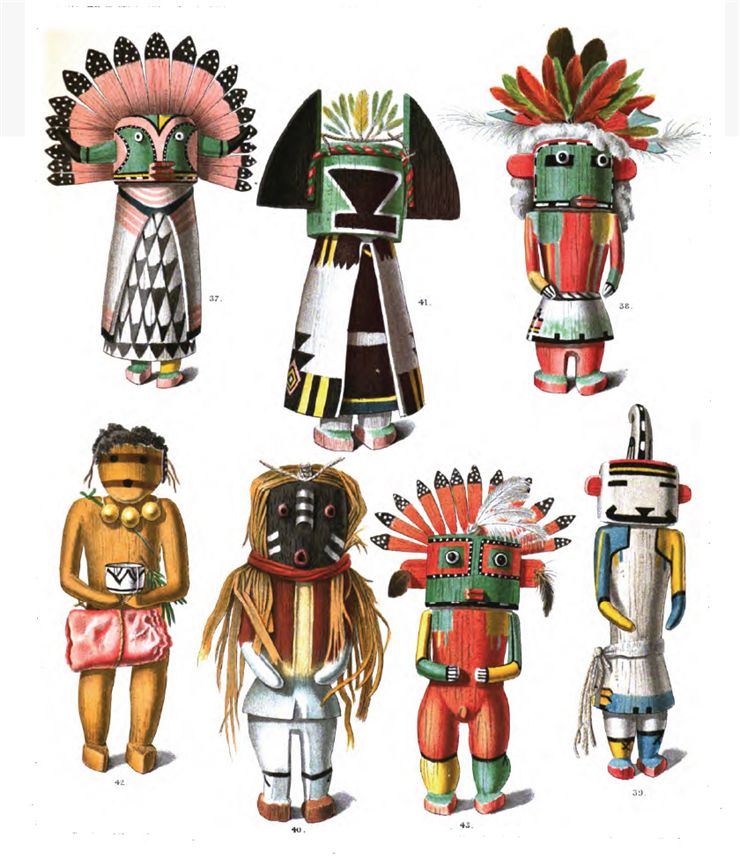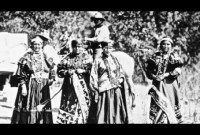Whispers of the Sacred: The Enduring Art of Hopi Kachina Doll Carving
In the arid, windswept landscapes of northeastern Arizona, where ancient mesas rise like sentinels against the vast sky, resides the Hopi Tribe, a people whose traditions are as deeply rooted as the very cottonwood trees that line their sparse riverbeds. Among their most profound cultural expressions is the creation of the tihu, commonly known as the kachina doll. These are not mere playthings or decorative objects; they are tangible representations of spiritual beings, sacred teachers, and enduring symbols of a cosmology that connects the Hopi people to their land, their ancestors, and the cyclical rhythms of life.
To understand the kachina doll is to peer into the heart of Hopi belief. The word "Kachina" (or more accurately, Katsina in the Hopi language) refers to the benevolent spiritual beings who reside in the San Francisco Peaks and other sacred mountains, visiting the Hopi villages during the first half of the year, from the winter solstice to mid-July. These spirits are believed to be intermediaries between humans and the divine, bringing rain, fertility, health, and well-being. During ceremonies, masked Hopi men embody these Katsina spirits, dancing and singing to bless the community. The dolls, then, are not idols to be worshipped, but rather gifts given primarily to Hopi girls by the masked dancers, serving as teaching tools to introduce them to the pantheon of Katsina spirits, their characteristics, and the moral lessons they impart.
A Legacy Carved in Wood and Time
The history of kachina doll carving is as old as the Hopi people themselves, with archaeological evidence suggesting similar forms dating back centuries. Early dolls were often simple, flat figures, sometimes referred to as "tablet dolls," carved from cottonwood root and painted with mineral and plant pigments. Over time, as the Hopi interacted with other cultures and artistic influences, the dolls evolved, becoming more three-dimensional, detailed, and intricate, reflecting the carver’s skill and the specific characteristics of the Katsina being represented.
The material of choice has always been the root of the cottonwood tree (Populus fremontii). This wood is remarkably soft, lightweight, and easy to carve, making it ideal for the intricate details required. It is also deeply symbolic, as cottonwood trees thrive near water sources, a precious commodity in the desert, thus linking the material itself to the life-giving essence of the Katsina.
The carving process is a meditative and spiritually charged endeavor, typically performed by Hopi men who have undergone initiation into the Katsina societies. It begins with selecting a suitable piece of cottonwood root, which is then dried and shaped with simple hand tools – often a small knife, a rasp, and sandpaper. The carver carefully studies the wood, envisioning the Katsina within, allowing the natural contours of the root to guide the form. There are no two kachina dolls exactly alike, even if they represent the same Katsina, as each piece of wood, and each carver’s hand, is unique.
Once the basic form is established, the intricate details begin to emerge. Feathers, masks, clothing, and accoutrements are painstakingly carved, often requiring hours of focused attention. Historically, pigments were derived from natural sources: white from kaolin clay, black from charcoal or manganese ore, blue and green from copper carbonate, and red from iron oxide. Today, while some carvers still utilize traditional pigments, acrylic paints are widely used, offering a broader palette and greater durability. The painting is a crucial step, bringing the Katsina to life with vibrant colors and symbolic patterns, each line and shade carrying meaning related to the Katsina’s power, attributes, or origin.
The Purpose Beyond the Art
"These aren’t just pretty objects," explains a Hopi elder, his voice raspy with age and wisdom, preferring to remain unnamed due to the sacred nature of the topic. "They are teachers. When our girls receive them, they are learning about the world, about who we are as Hopi. They learn about the rain, about the corn, about behaving properly. Each doll tells a story."
The dolls are primarily given during two significant annual ceremonies: the Powamuya (Bean Dance) in February, which marks the beginning of the Katsina season and focuses on purification and planting, and the Niman (Homegoing) ceremony in July, when the Katsina spirits return to their spiritual home. During these ceremonies, masked dancers distribute the dolls to children, especially girls, who collect them and arrange them on the walls of their homes, creating a visual encyclopedia of Hopi cosmology. Boys, on the other hand, are traditionally given bows and arrows or miniature versions of Katsina masks, preparing them for their future roles as dancers and protectors of the tradition.

Each Katsina has a distinct appearance, songs, and purpose. There are hundreds of different Katsina figures, representing everything from animals (Bear Katsina, Eagle Katsina) and plants (Corn Katsina) to specific natural phenomena (Cloud Katsina, Rain Katsina) and abstract concepts or moral figures (Ogre Katsina, Clown Katsina). Some are fierce and imposing, others are gentle and humorous. The dolls help children recognize these figures, understand their roles in the Hopi ceremonial cycle, and internalize the values they embody, such as humility, respect for nature, community cooperation, and gratitude.
Challenges and Preservation in a Modern World
In recent decades, the traditional art of kachina doll carving has faced a complex set of challenges. The increasing demand from collectors and the art market has brought both opportunities and dilemmas. On one hand, it has provided economic support for Hopi carvers, allowing them to sustain their families while continuing their artistic practice. On the other hand, commercialization has led to concerns about authenticity, cultural appropriation, and the potential erosion of the dolls’ sacred meaning.
"There’s a fine line we walk," says Aaron Honyumptewa, a renowned Hopi carver whose family has been carving for generations. "We want to share our art, but we also have to protect our traditions. Some people just want a ‘souvenir,’ they don’t understand the spiritual depth. And there are fakes out there, made by non-Natives, that disrespect our culture."
The issue of authenticity is particularly sensitive. Traditional kachina dolls are carved entirely from a single piece of cottonwood root, with attachments like feathers or small tools being the only additions. However, market demand has led to the production of dolls with separate, glued-on parts, or those made from other woods, sometimes by non-Hopi individuals. This not only devalues the traditional craft but also undermines the spiritual integrity of the object. Hopi tribal laws and cultural preservation efforts are actively working to combat these issues, educating the public and supporting authentic Hopi artists.
Another challenge lies in ensuring the continuity of the tradition within the younger generations. While many young Hopi men are still learning the art from their fathers and grandfathers, the pull of modern life and the economic realities of a remote reservation can make it difficult to dedicate oneself fully to the craft. However, community leaders and master carvers are committed to passing on this vital aspect of their heritage. Workshops, mentorship programs, and cultural education initiatives are crucial in nurturing the next generation of carvers and safeguarding the sacred knowledge associated with each Katsina.
The Enduring Legacy
Despite these challenges, the art of Hopi kachina doll carving remains vibrant and dynamic. It continues to be a living tradition, evolving in style and technique while holding fast to its spiritual core. Each doll, whether a meticulously carved masterpiece in a museum or a simple, cherished figure on a Hopi home wall, serves as a powerful testament to the enduring resilience and profound spiritual connection of the Hopi people.
They are more than just wood and paint; they are the whispers of the sacred, echoes of ancient prayers for rain and abundance, and tangible links to a world where spirits walk among men. Through the skilled hands of Hopi carvers, the Katsina continue to teach, to inspire, and to ensure that the unique cultural heritage of the Hopi people flourishes for generations to come, a timeless bridge between the visible and the unseen, the past and the future.


